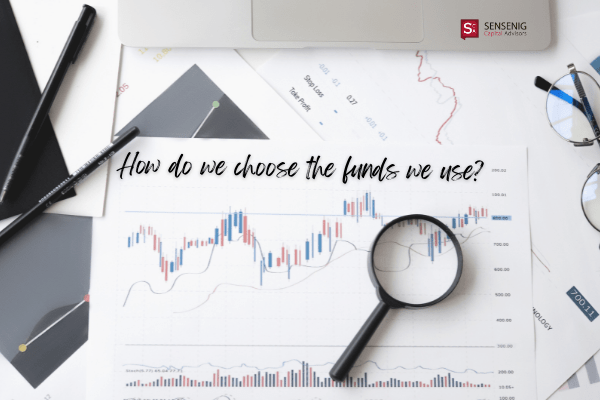With interest rates near historical lows, some investors may be anxious about a possible rate climb and its potential impact on their fixed income investments. Rising interest rates typically cause existing bonds to lose value. While investors might hold short-term instruments to manage this risk, an interest rate decline could spoil this strategy by forcing investors to reinvest in lower yields when their short-term instruments mature.
Rate movements in either direction affect portfolio returns. This is true in any market environment, regardless of the current rate level. The larger question is how to manage the risk. As you read the financial headlines and evaluate your current fixed income exposure, it may be helpful to consider these principles about fixed income investing:
Interest rate movements are unpredictable.
Academic research offers strong evidence that the bond market is efficient, and that bond prices and interest rates are not predictable over the short term.1 This uncertainty is reflected in the often-contradictory interest rate forecasts offered by economists, analysts, and other market watchers.2
Even when the experts share similar views on the direction of the economy and credit markets, reality often proves them wrong. Last year’s Wall Street Journal forecasting survey offers a recent example.3 Among fifty economic forecasters surveyed in 2009, forty-three expected the ten-year US Treasury note yield to move higher over the next year, with an average estimate of a 4.13% yield. Only two respondents predicted rates to fall below 3.00%. The ten-year Treasury yield slumped to 2.95% on June 30, 2010, and rates on thirty-year mortgages fell to their lowest level since Fannie Mae began tracking them in 1971.
Today’s bond prices already reflect expectations for tomorrow’s business conditions and inflation, and these expectations can change quickly in response to new information. This new information is unknowable. Investors who accept market efficiency should not be surprised when the credit markets foil the experts. If prices were easy to forecast, you should find a host of fixed income managers with market-beating returns. But most of them underperform their respective benchmarks over longer time periods.4
Since no one has a reliable method for determining whether interest rates will rise or fall in the near future, investors should avoid making fixed income decisions based on a forecast, media coverage, or their own hunches.
Pursuing higher expected returns requires more risk taking.
The strong link between risk and return appears in all properly functioning capital markets. When investing in stocks, bonds, or other assets, investors must accept more risk to pursue a higher potential return.
In the fixed income markets, earning a return above short-term government instruments is usually a function of assuming more term and credit risk. Term risk refers to a bond’s maturity, and credit risk refers to the creditworthiness or default potential of the borrower. Bonds with longer maturities and lower credit quality are usually considered riskier and have offered higher yields and returns to compensate investors for higher risk.
On the term side, investors who commit their capital for longer periods of time are exposed to the amplified effects of changing interest rates. Bond prices and interest rates move in the opposite direction: When rates rise, the value of an existing bond declines; when rates fall, bond values rise. The market adjusts the price to match the yield available on a new instrument. The longer the bond’s maturity, the greater the price adjustment for a particular interest rate change. A long-term bond is more exposed to rate changes than a short-term instrument, and usually (but not always) offers a higher yield to compensate investors for the extra risk. Also, lower-coupon bonds are more affected by interest rate changes than higher-coupon bonds. For example, if rates move 1%, a bond that pays 3% will experience a greater gain or loss than one paying 5%.
On the credit risk side, the government is considered the strongest borrower in the market, so it has a lower cost of capital relative to other issuers. The most creditworthy companies are considered relatively safe, but they must still offer a higher rate than the government to compensate investors for taking more default risk. The weaker a corporate borrower’s financial condition, the more it must pay in yield to attract investors. Investors seeking higher returns on the credit spectrum must bear a higher risk of default.5
Investment strategy should drive fixed income decisions.
Investors may hold fixed income securities for a variety of reasons—for example, to reduce portfolio volatility, generate income, maintain liquidity, pursue higher returns, or meet a future funding obligation. Each objective may involve a different portfolio approach, or a combination of strategies to manage tradeoffs. For example, investors who want to maximize current income may not be strongly concerned with the effects of short-term price volatility. They may extend maturity or accept slightly lower credit quality when the market offers a yield premium for doing so. On the other hand, investors seeking long-term wealth appreciation may commit most of their portfolio to equities and keep their fixed income investments short term and high quality to buffer the volatility of stocks.
Regardless of your approach, you should know the difference between controlling risk and avoiding it. You cannot eliminate risk, but you can manage your exposure by diversifying across maturities, industries, countries, and currencies to reduce the impact of rates, inflation, currency fluctuations, and other risks. Your decision to take more term and default risk may depend on the current state of the yield curve and credit spread.
Many factors influence the direction of interest rates and performance in the bond markets, and these are too complex for anyone to reliably predict. Rather than placing your faith in the experts or reacting to economic news, manage your fixed income component from a portfolio perspective. Your strategy should reflect your overall investment goals, risk tolerance, and other personal financial considerations. This is a solid approach to managing your portfolio in an uncertain interest rate market.
References
1 Eugene F. Fama, “The Information in the Term Structure,” Journal of Financial Economics 13, no. 4 (December 1984): 509-528. Also: Robert R. Bliss and Eugene F. Fama, “The Information in Long-Maturity Forward Rates,” American Economic Review 77, no. 4 (September 1987): 680-692.2 Mark Gongloff, “Two Treasury Forecasts: a Grand Canyon-Size Gap,” Wall Street Journal, April 10, 2010.
3 Wall Street Journal Forecasting Survey, www.wsj.com, accessed July 7, 2010.
4 Christopher R. Blake, Edwin J. Elton, and Martin J. Gruber, “The Performance of Bond Mutual Funds,” Journal of Business 66, no. 3 (July 1993): 371-403. Also see Standard & Poor’s Indices Versus Active (SPIVA) Scorecard for the US, Canada, Australia, and Europe (http://www.standardandpoors.com/indices/spiva/en/us).
5 The yield curve plots the current relationship between rates and maturity, and the credit spread plots the risk-return relationship across the range of credit qualities. The curves offer a current snapshot of how markets are pricing term and credit exposure.



